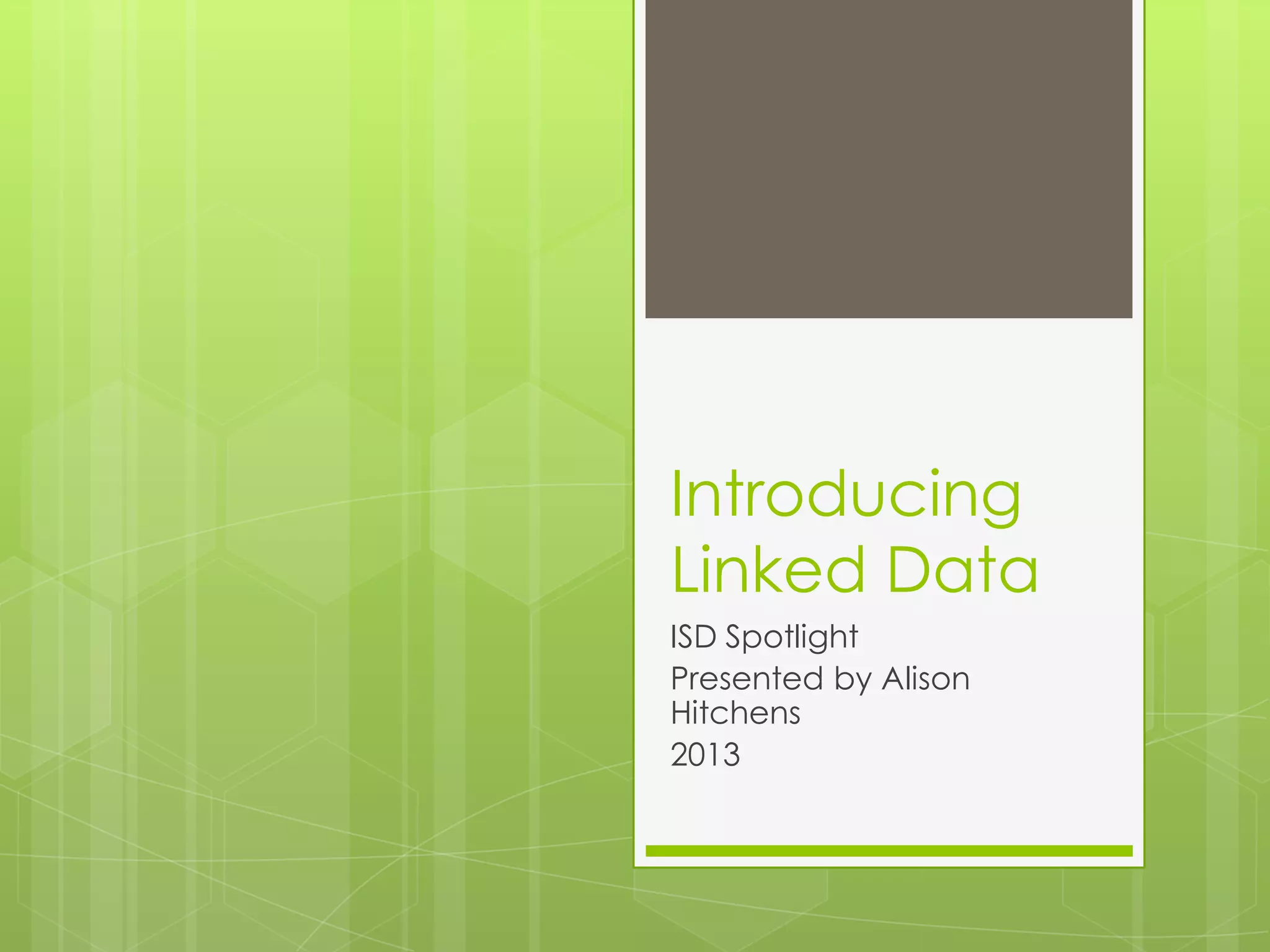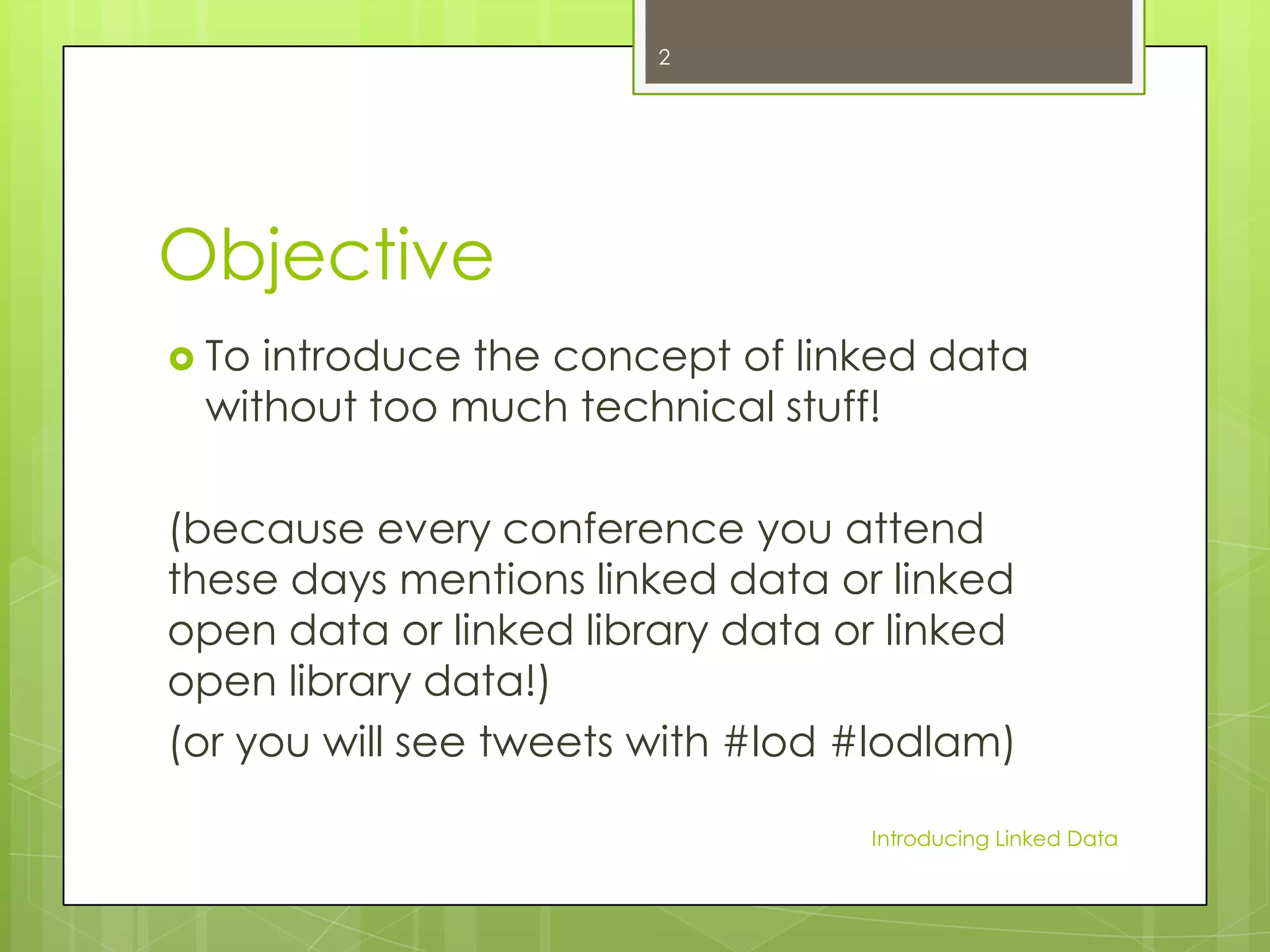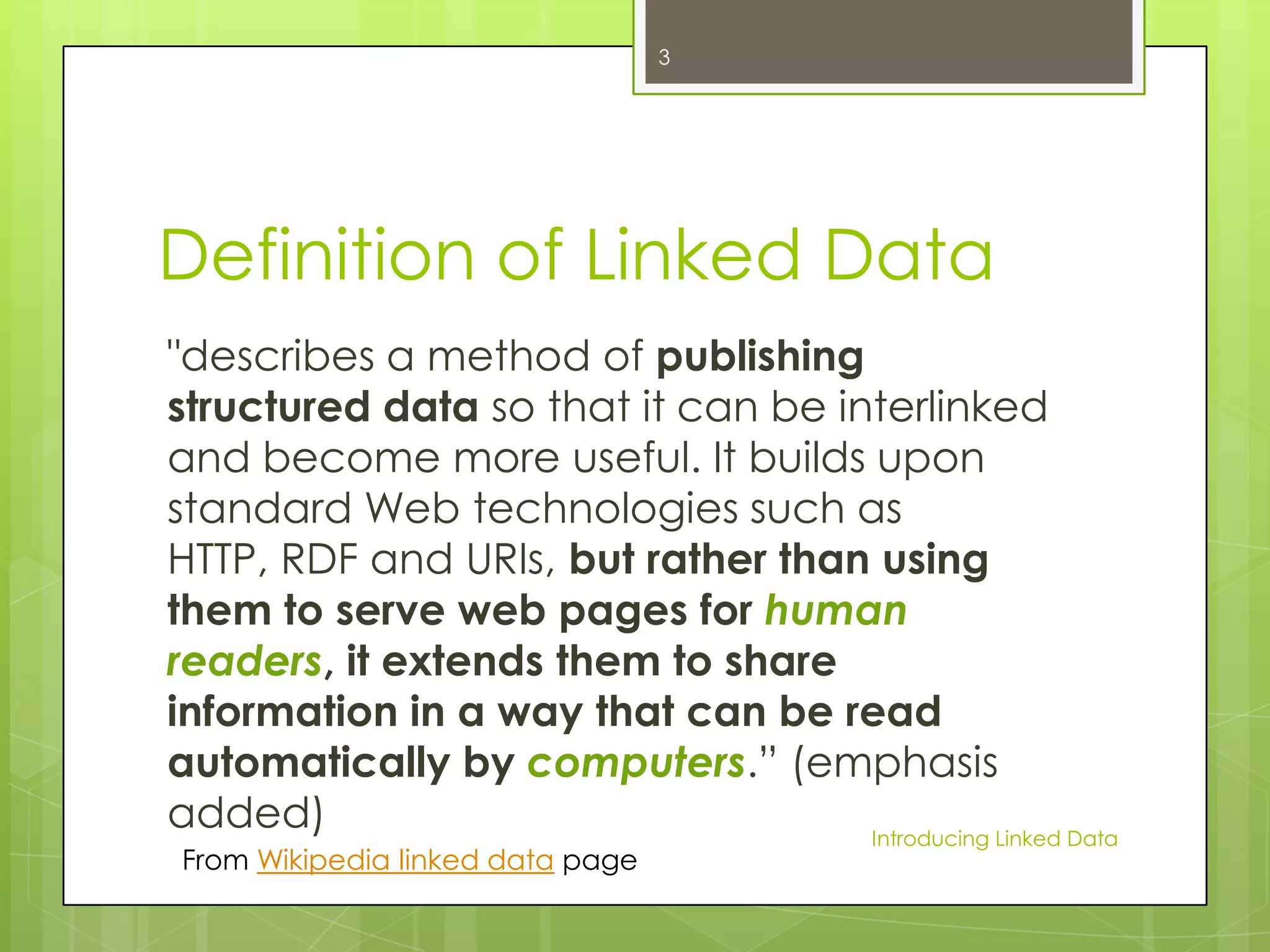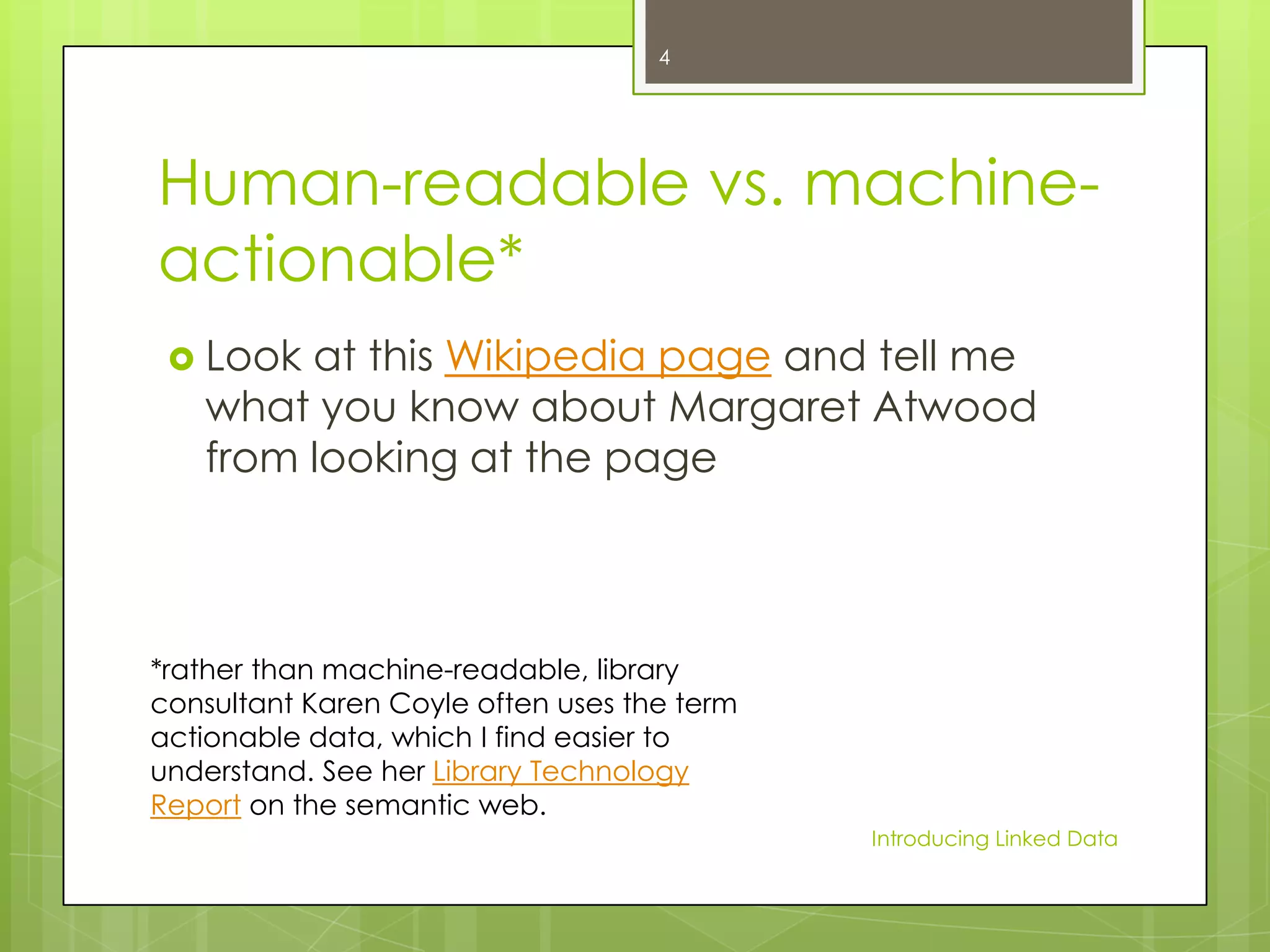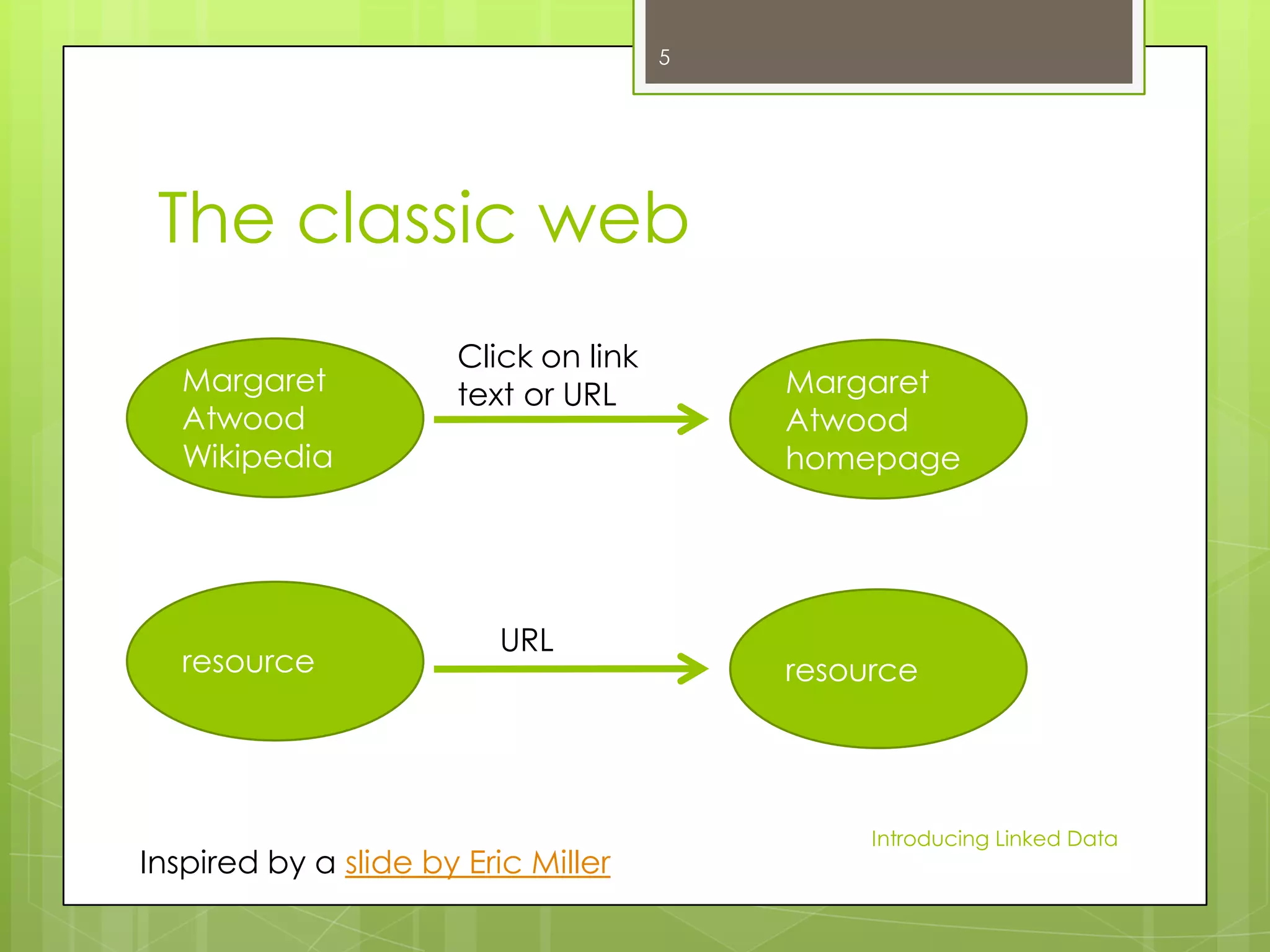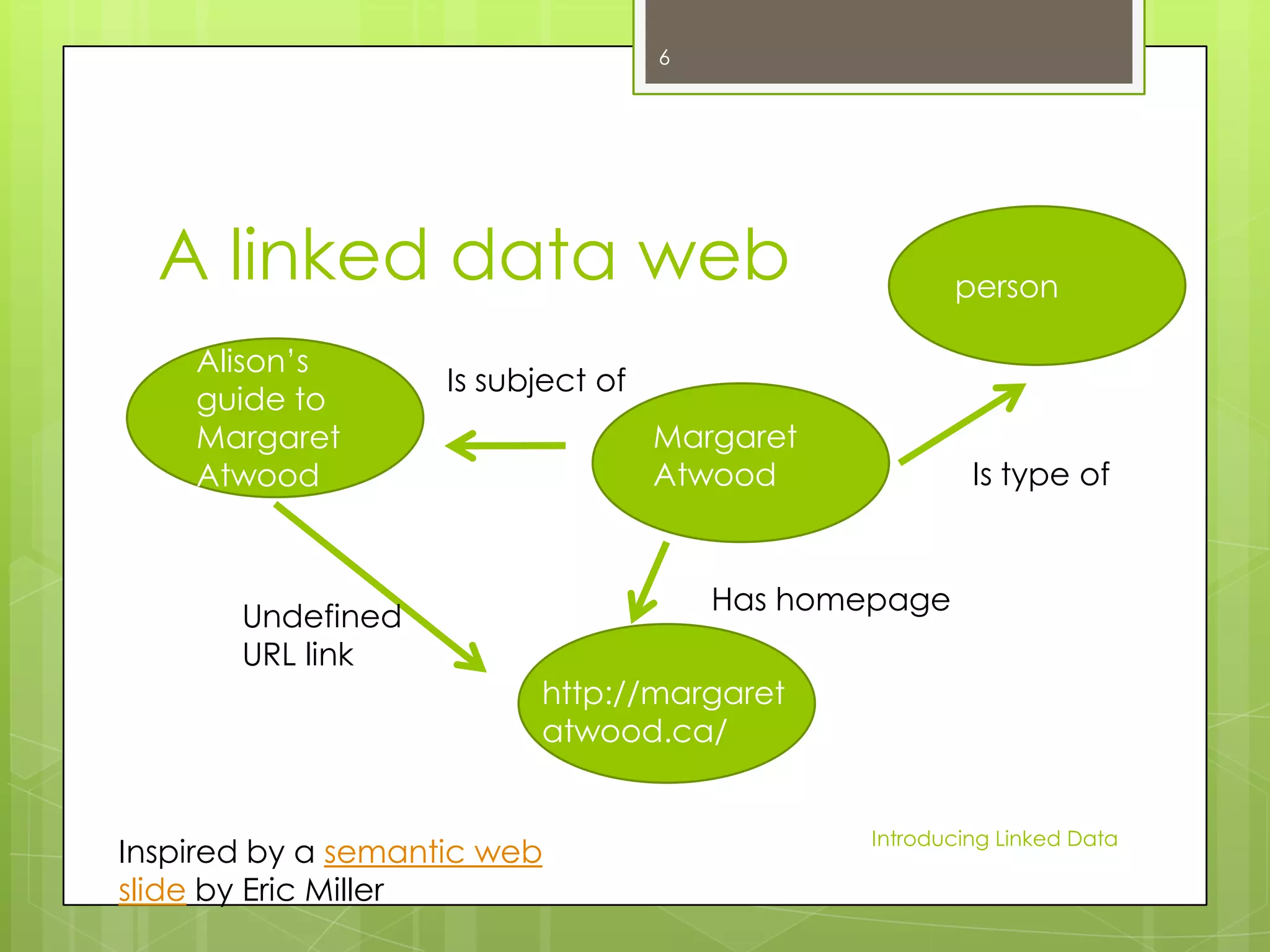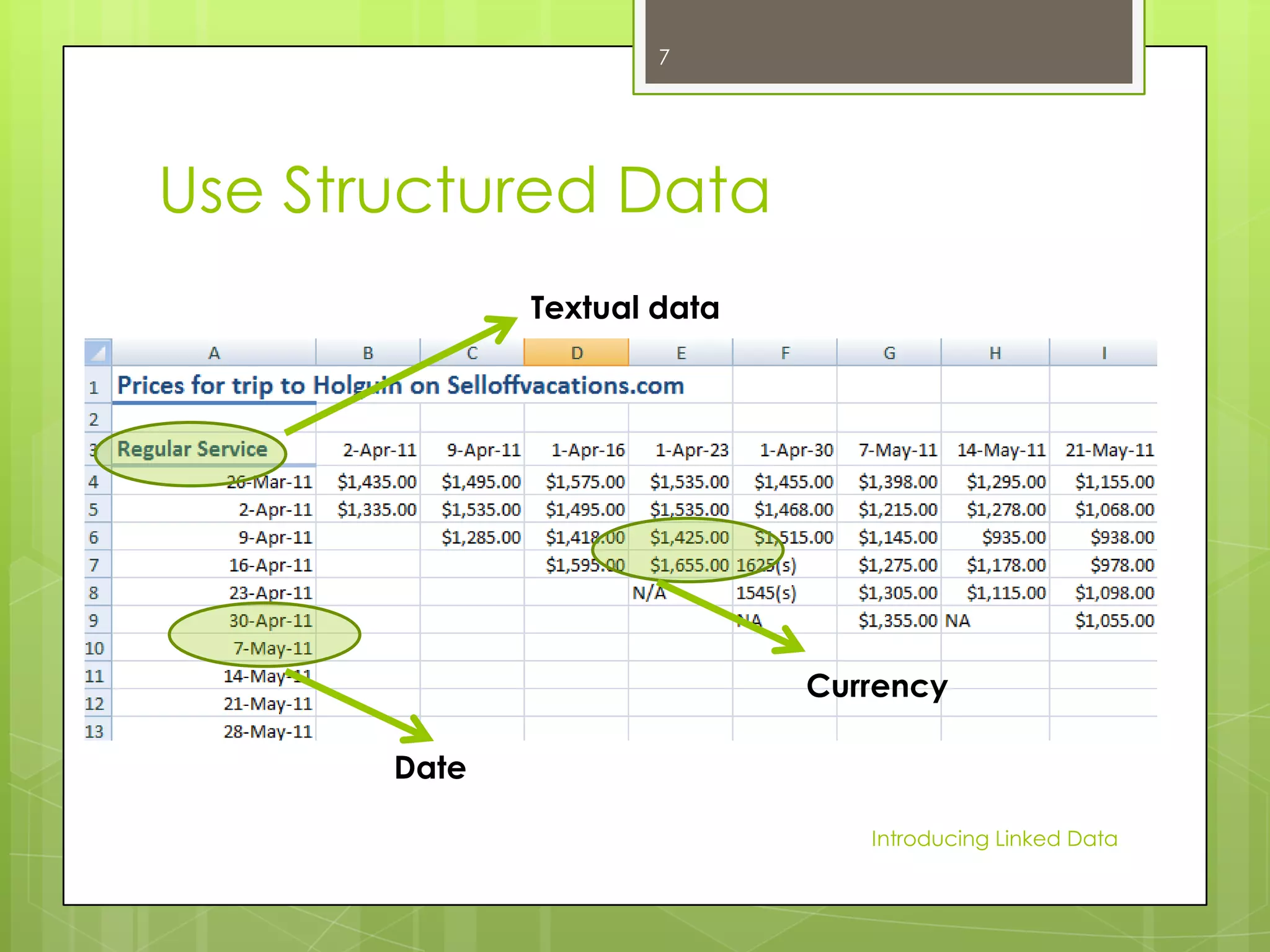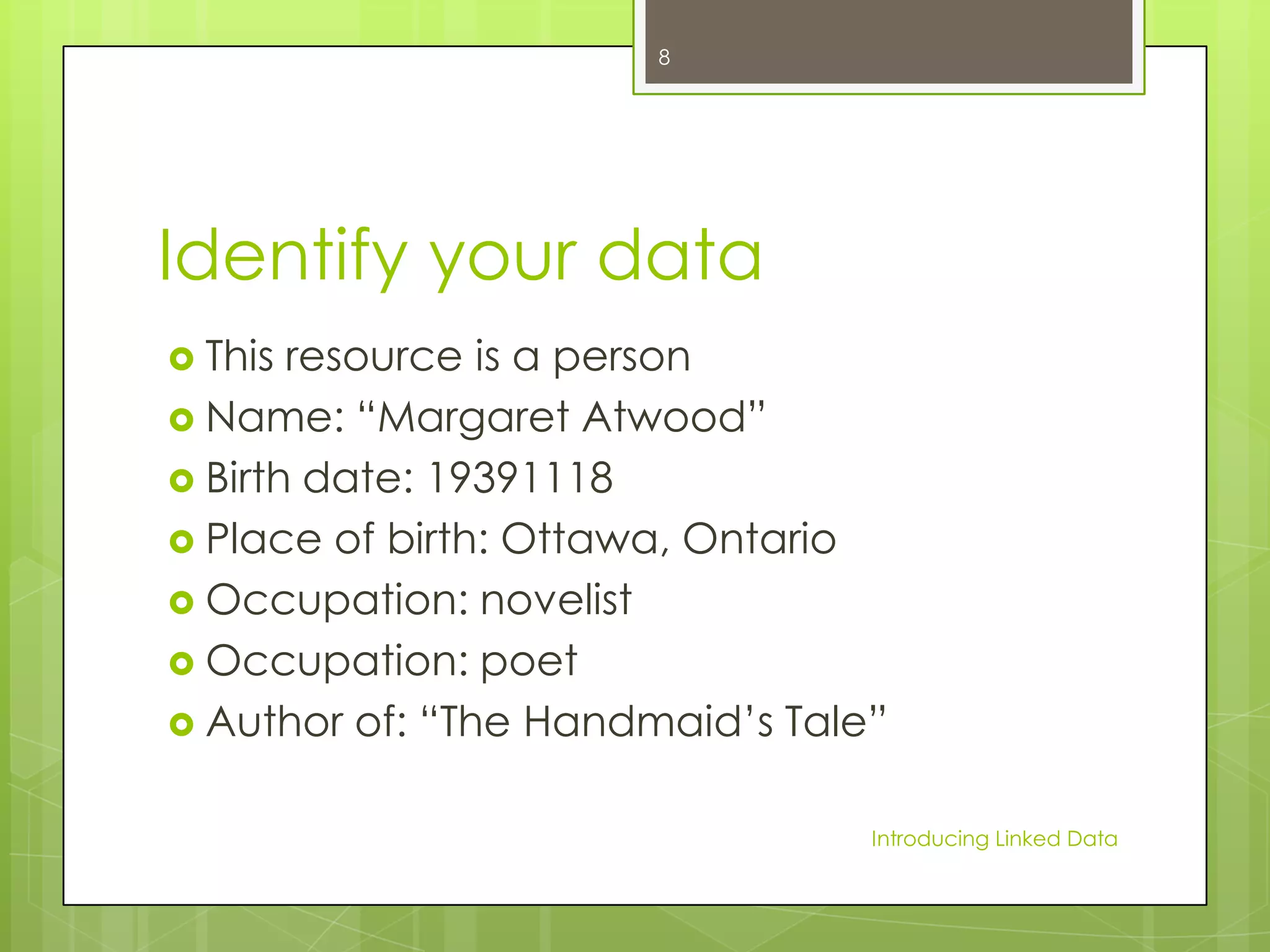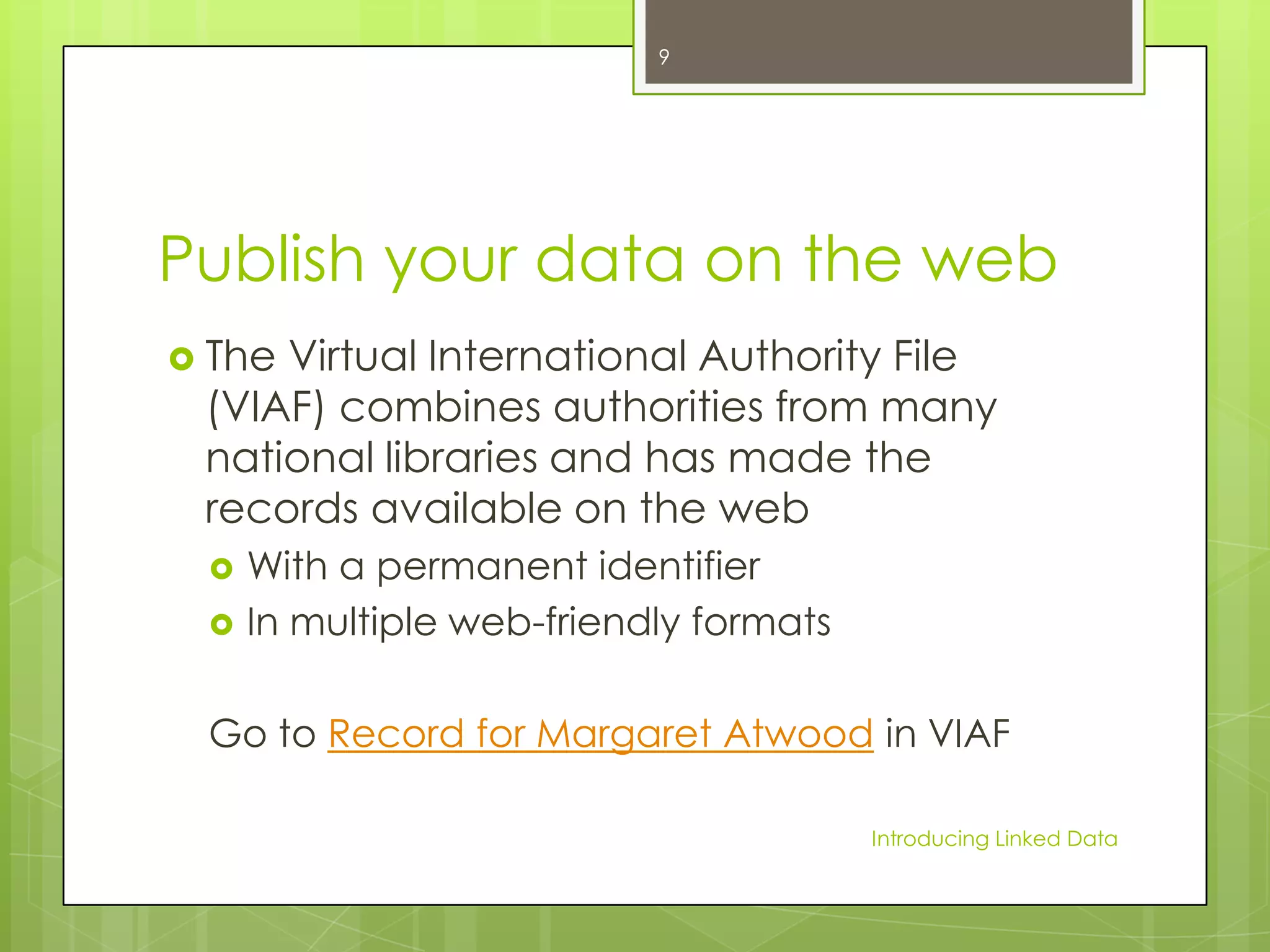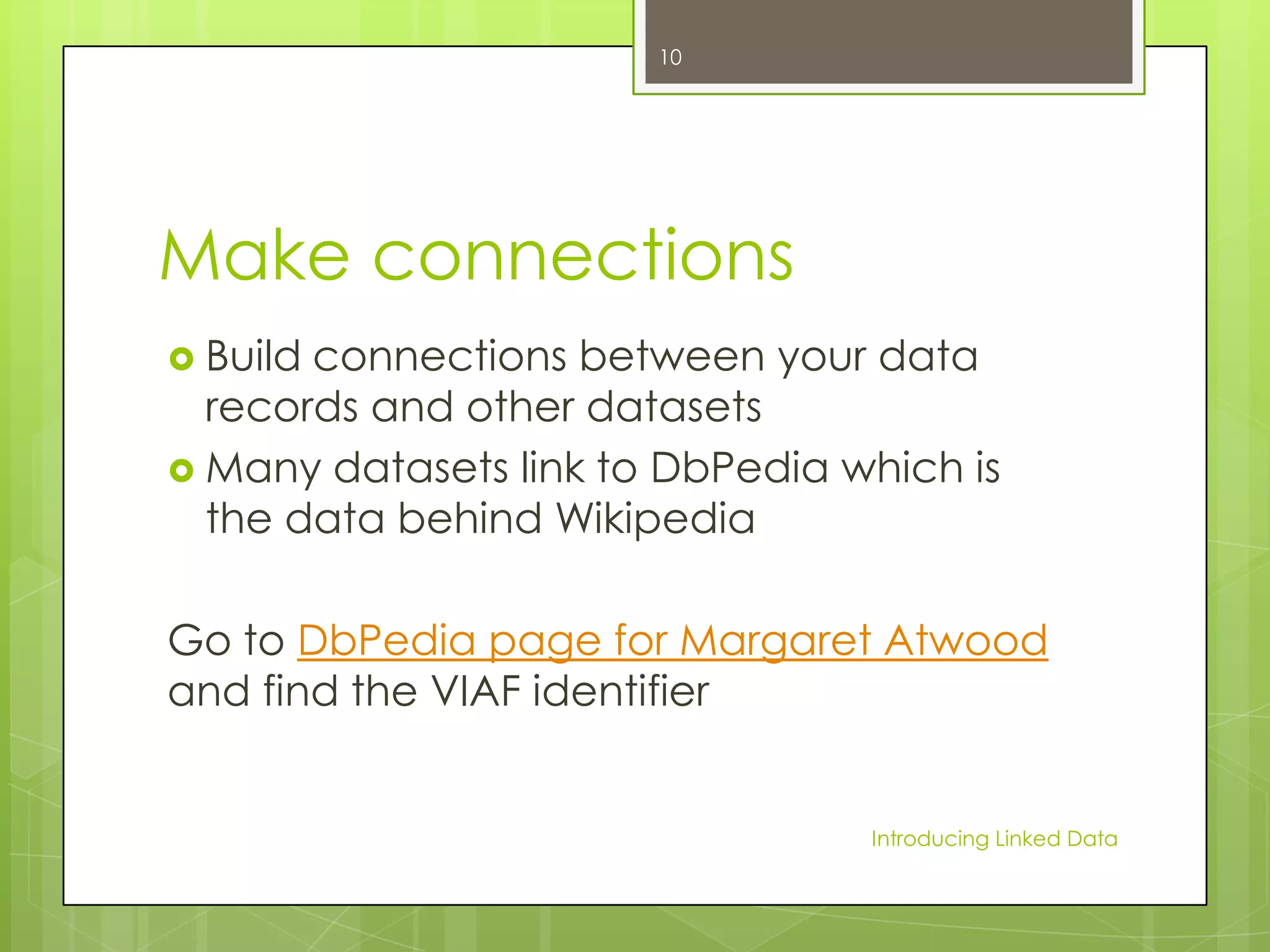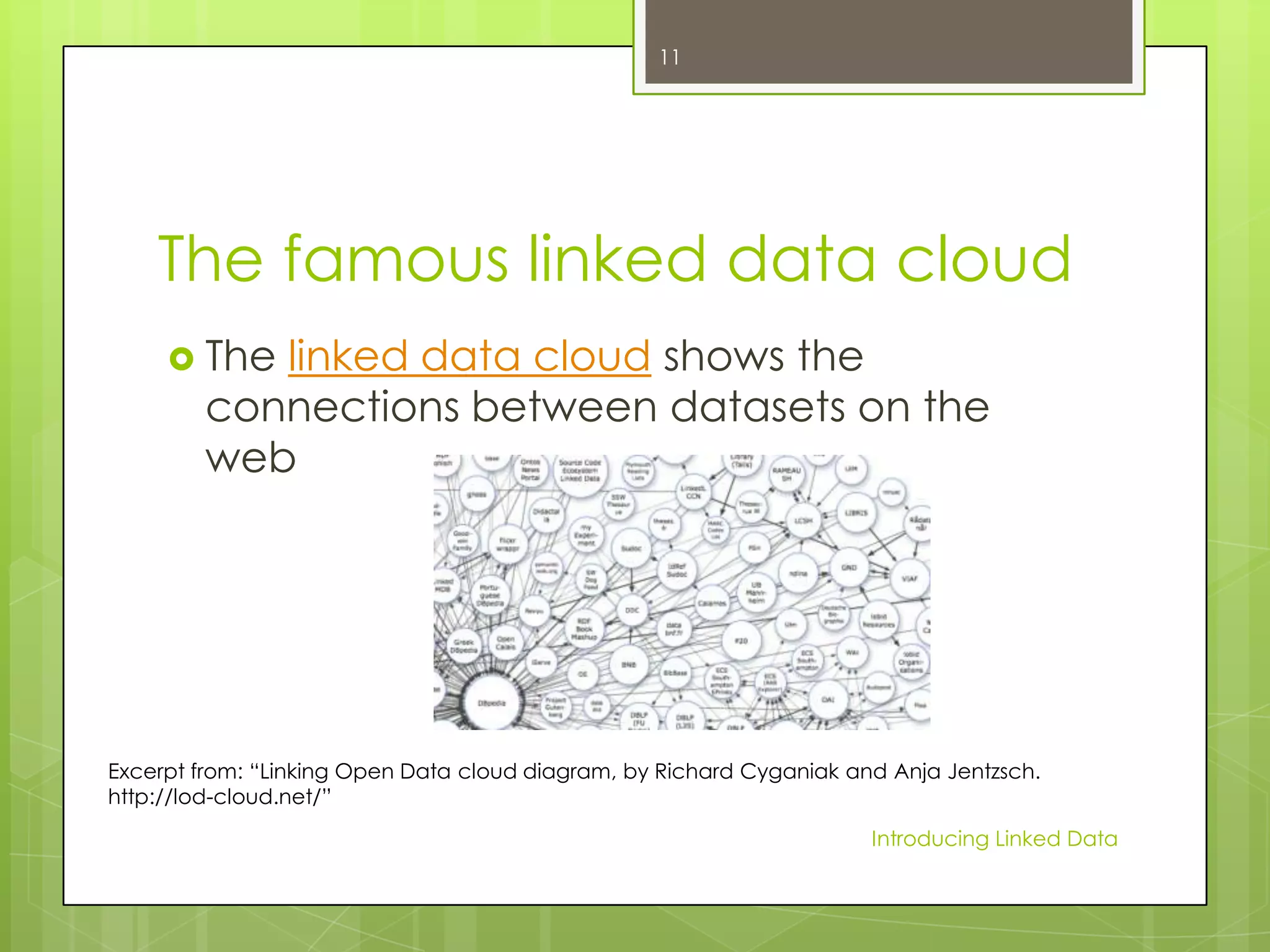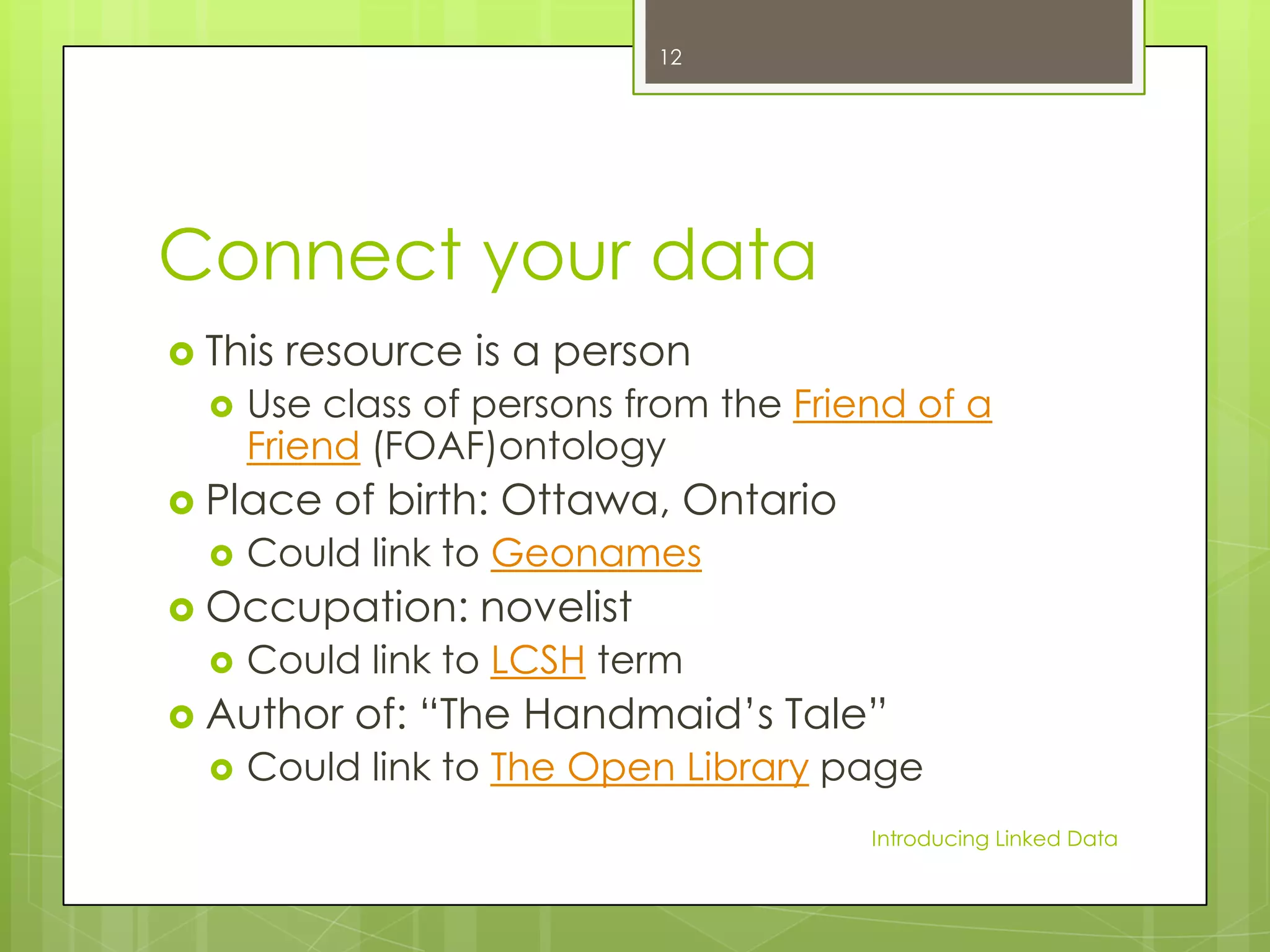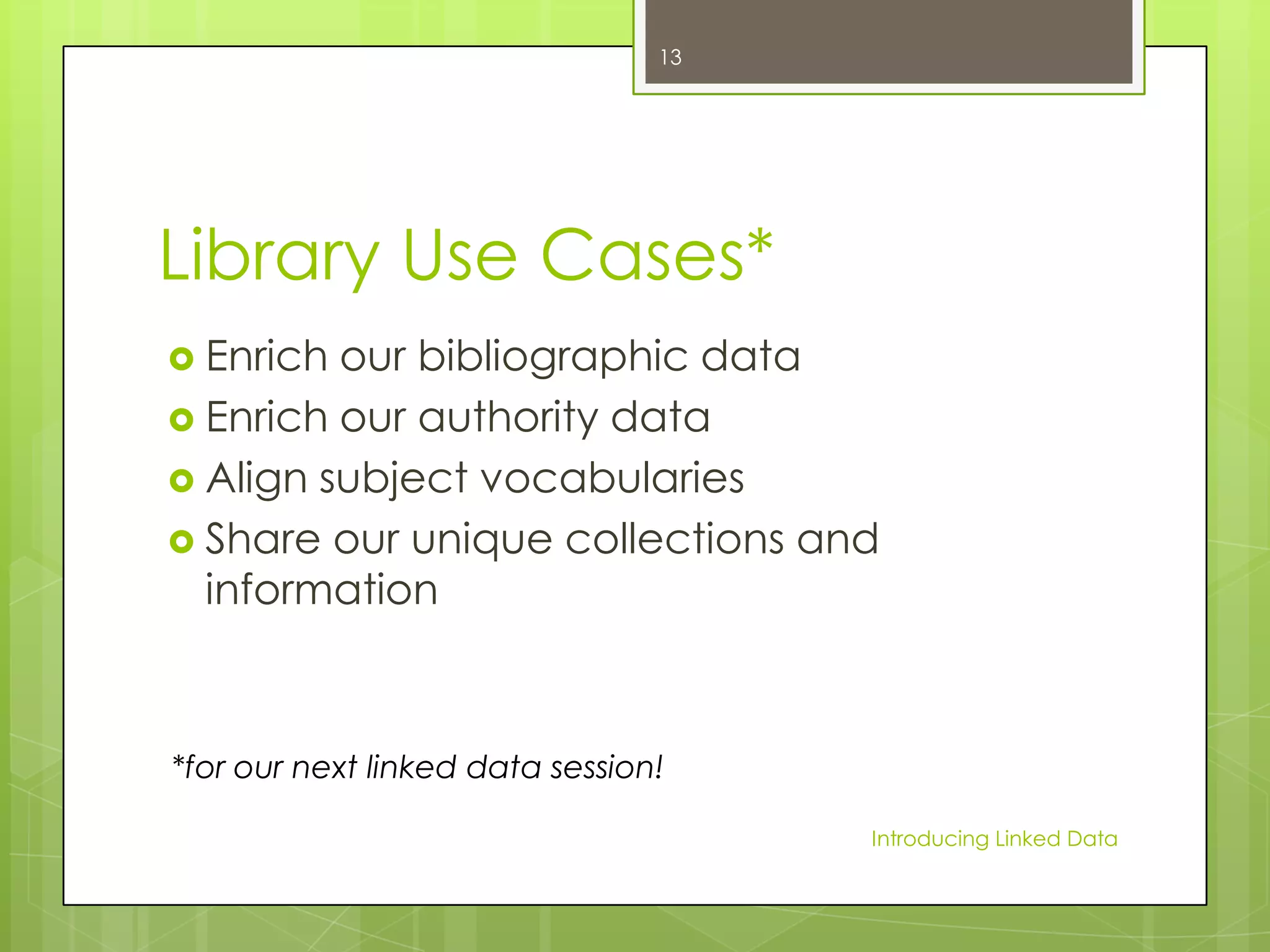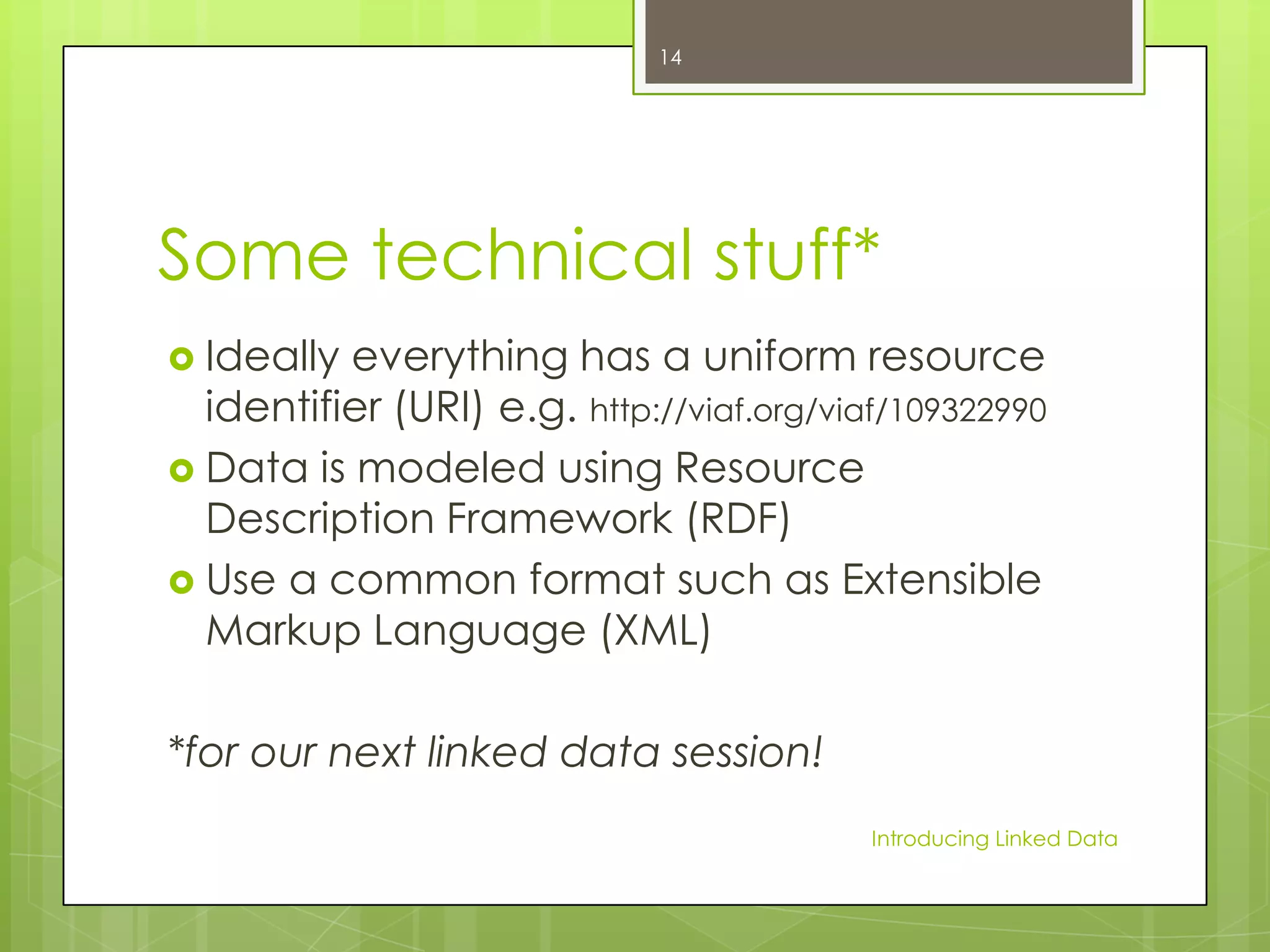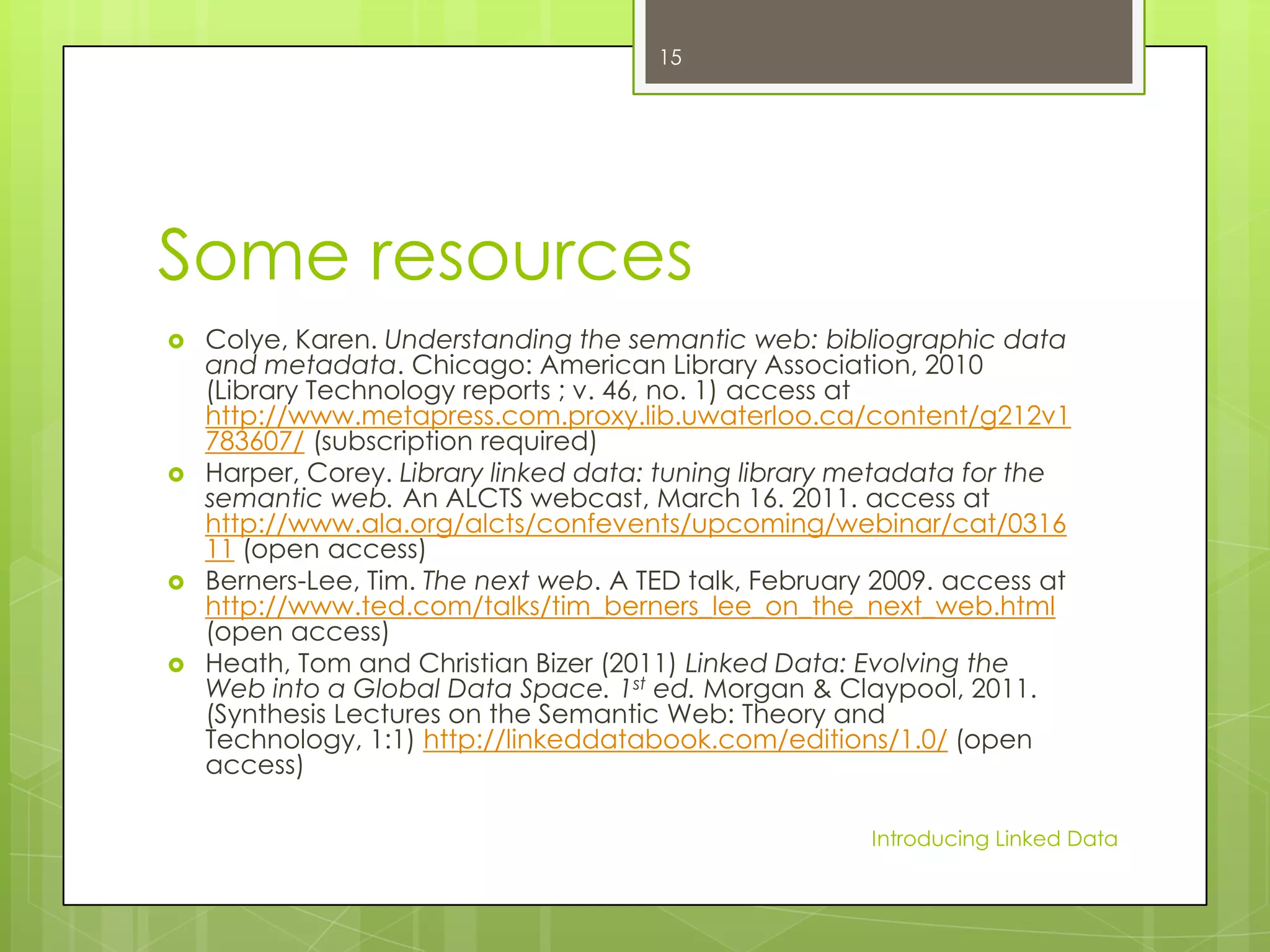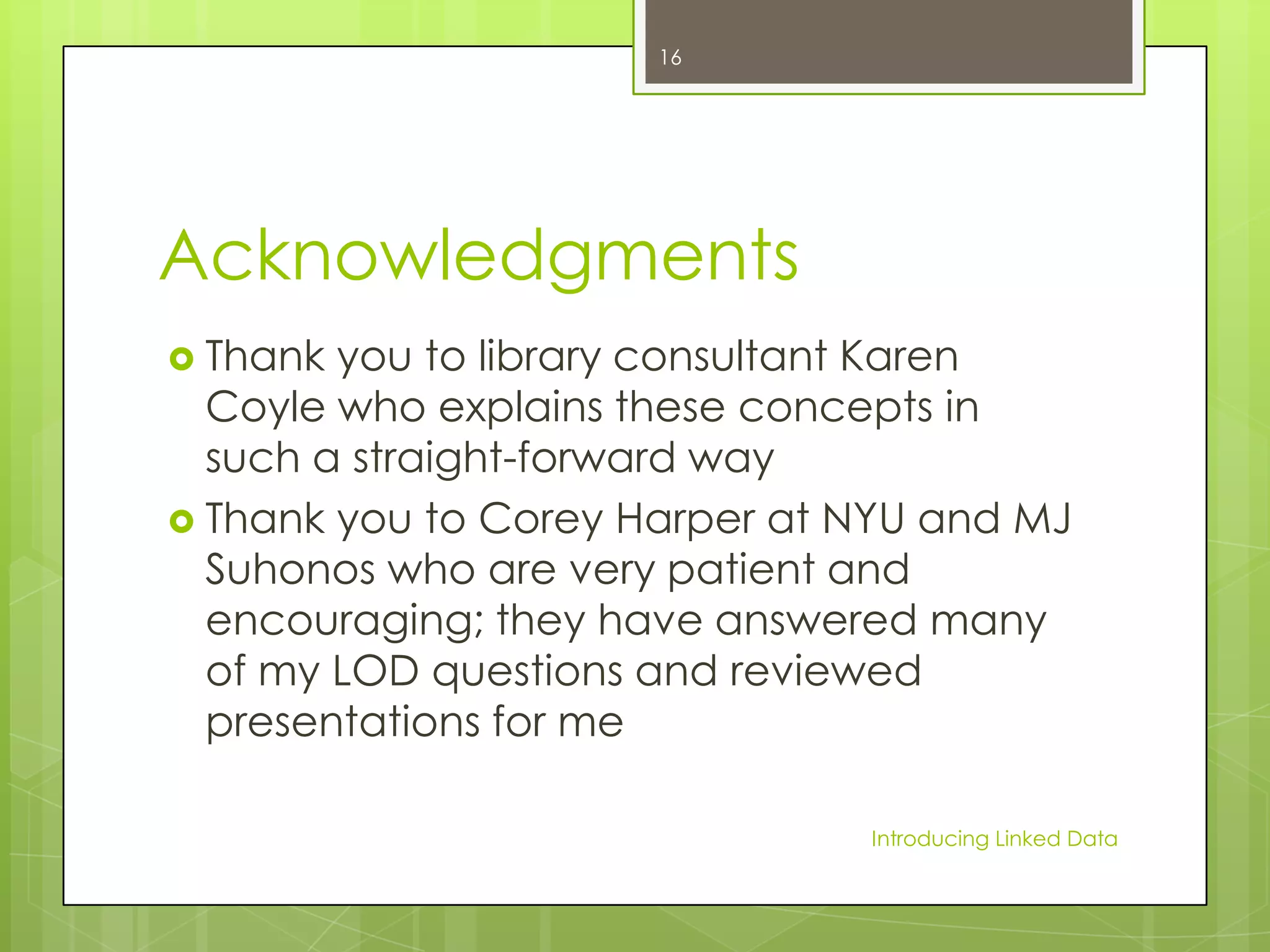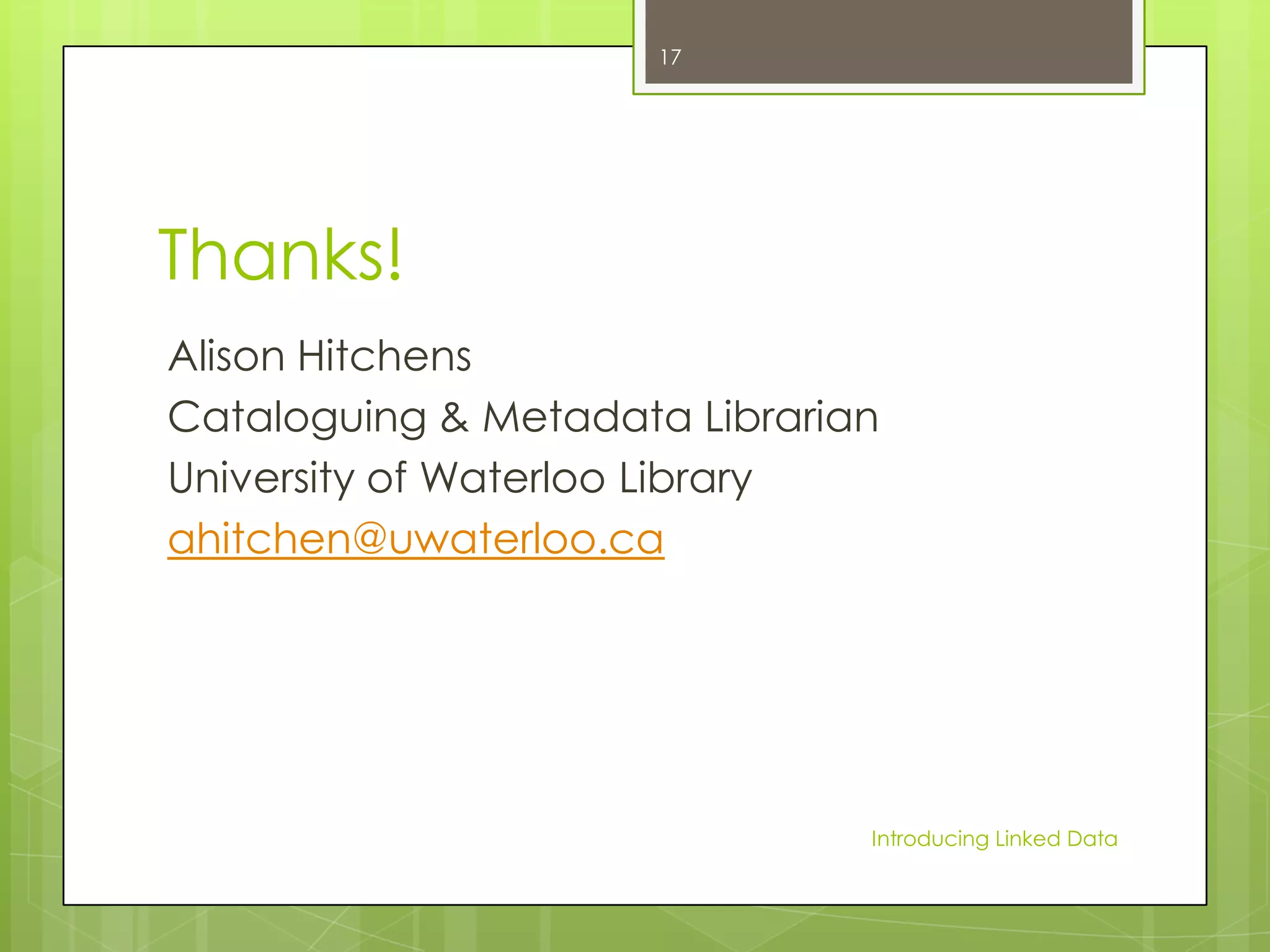This document introduces the concept of linked data through defining it as a method of publishing structured data on the web so that it can be interlinked and made more useful for computers to process. It explains how linked data builds upon standard web technologies like HTTP, RDF and URIs but extends them to share information in a way that is machine-readable rather than just for humans. The document then provides examples of how linked data can enrich data about people, places and other resources by connecting the information to structured data sources on the web.
